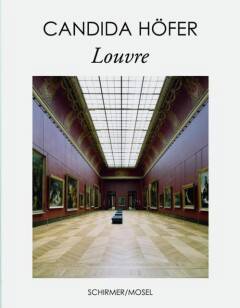
- Afhalen na 1 uur in een winkel met voorraad
- Gratis thuislevering in België vanaf € 30
- Ruim aanbod met 7 miljoen producten
- Afhalen na 1 uur in een winkel met voorraad
- Gratis thuislevering in België vanaf € 30
- Ruim aanbod met 7 miljoen producten
Zoeken
Omschrijving
The architectural history of the Louvre stretches back to the early 13th century. A comparatively modest royal fortress, it became the royal residence under François I, friend and patron of Leonardo da Vinci. Louis XIV turned the Louvre into a splendid castle. Four years after the outbreak of the French Revolution, the Louvre opened its doors to the public. The royal art collections, with constant additions through Napoleon's military campaigns and forays as well as donations, purchases and excavations, today make the Louvre one of the world's richest and finest museums. Candida Höfer, known for her images of deserted public spaces, photographed the empty rooms and galleries of the Louvre on days when it was closed to the public. In her luminous color pictures, the treasures of Western art enter into a silent yet eloquent dialog with the architectural setting, the luxurious or sober décor, the building's past, and its present as a museum.
Specificaties
Betrokkenen
- Auteur(s):
- Uitgeverij:
Inhoud
- Aantal bladzijden:
- 48
- Taal:
- Engels
Eigenschappen
- Productcode (EAN):
- 9783829602501
- Verschijningsdatum:
- 20/10/2006
- Uitvoering:
- Hardcover
- Afmetingen:
- 265 mm x 340 mm
- Gewicht:
- 950 g

Alleen bij Standaard Boekhandel
+ 89 punten op je klantenkaart van Standaard Boekhandel
Beoordelingen
We publiceren alleen reviews die voldoen aan de voorwaarden voor reviews. Bekijk onze voorwaarden voor reviews.








